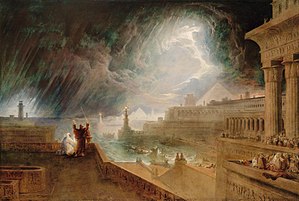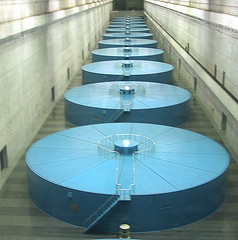Be still, my soul! the waves and winds still know
His voice who ruled them while He dwelt below.
The “dog days” of summer are winding down and, it’s hurricane season in the Caribbean! The season when hurricanes form runs from June to November, but the storms are more likely between August and October.
Hurricane Ida made landfall as a Category 4 storm, in New Orleans, August 29, 2021. Ida blasted ashore as one of the most powerful storms ever to hit the United States, knocking out power to all of New Orleans, blowing roofs off buildings and reversing the flow of the Mississippi River as it rushed from the Louisiana coast into one of the nation’s most important industrial corridors. It hit on the same date Hurricane Katrina ravaged Louisiana and Mississippi 16 years earlier, coming ashore about 45 miles (72 kilometres) west of where Category 3 Katrina first struck land. Ida’s 150-mph (230 kph) winds tied it for the fifth-strongest hurricane to ever hit the mainland United States.
A little more than a week earlier, Hurricane Grace pounded Mexico’s Yucatan Peninsula, downing trees and causing power outages for nearly 700,000 people. Then Grace moved on to the Gulf Coast state of Veracruz, causing severe flooding and mudslides that killed at least eight people. Before striking Mexico, the storm showered torrential rains on Haiti, a country still recovering from a 7.2-magnitude earthquake in Haiti on August 15.
Northern Venezuela and Colombia only have a 1 to 5 percent chance of a hurricane strike in any given year. The northernmost part of Venezuela, namely the Paraguanà Peninsula, the Paria Peninsula and the islands (but sometimes also the northern coast), is located in the southern end of the trajectory of hurricanes. But it can happen. From August 7 to 9, 1993, Tropical Storm Bret moved across northern Venezuela and Colombia. Mudslides resulting from the heavy rainfall claimed 173 lives, while 10,000 were left homeless, and property damages totaled $25 million ($37 million 2008 USD).
But although Venezuela seldom has to deal with full-fledged tropical storms, we are affected by “tropical waves”. A tropical wave is an area of low pressure in the atmosphere moving westward from Africa into the Atlantic. Tropical waves last from a couple of days to several weeks, with new waves forming every few days. On satellite, these disturbances appear as clusters of thunderstorms and convection originating over North Africa and traveling westward into the tropical Atlantic. By providing the initial energy and spin needed for a hurricane to develop, tropical waves act like "seedlings" of tropical cyclones. Approximately 60 percent of tropical storms and minor hurricanes (categories 1 or 2), and nearly 85 percent of major hurricanes (category 3, 4, or 5) originate from tropical waves.
Even if they do not cause hurricanes, tropical waves often bring with thunderstorms and flooding rains. That’s what we have received over the past few weeks. Tropical waves 38 and 39 have destroyed over 8,000 homes and forced about 35,600 citizens to refuge in shelters. Besides affecting 116 roads and ten bridges, floods and landslides have damaged power stations in the states of Amazonas, Barinas, Bolivar, Delta Amacuro, Merida, Monagas, Tachira, and Zulia. Multiple floods and mudslides in in the neighboring state of Mérida have left 20 people dead and more than 1,200 buildings destroyed.
In La Caramuca, we have only had to deal with power outages. Our solar panels continue to work well, keeping the lights and security cameras going and the cell phones recharged. All the rain means excellent crops of fruits and vegetables. Luz Maria and I share the produce with our neighbors, those who stop by the mission and those we visit on evangelistic calls.
There also was a 5.2-magnitude earthquake in Portuguesa, another neighboring state, on August 25, and a 4.9 quake off the coast of Sucre state on August 30.
All of which brings to mind Luke 21:8-11. “There will be great earthquakes, and in various places famines and pestilences. And there will be terrors and great signs from heaven.” As with many Biblical prophecies, the Lord in these verses speaks of two impending catastrophes, the destruction of Jerusalem and the end of the world, with one foreshadowing the other. So he warns his followers of the persecution that will precede the city’s downfall, and of false prophets who will predict the end of the whole world based on natural disasters and terrible wars.
“And there will be signs in sun and moon and stars, and on the earth distress of nations in perplexity because of the roaring of the sea and the waves, people fainting with fear and with foreboding of what is coming on the world. For the powers of the heavens will be shaken. And then they will see the Son of Man coming in a cloud with power and great glory. Now when these things begin to take place, straighten up and raise your heads, because your redemption is drawing near” (Luke 21:25-28).
For those of us living in these days, the Lord’s words also apply to hurricanes, earthquakes, COVID-19 and even the persecution of believers in Afghanistan and other parts of the world. Like the first-century Christians, we are not terrified by cataclysm, for we not the end will not come until the day God has pointed. Nor do we regard them as random events, but signs that great day will come. “All these are but the beginning of the birth pains,” says the parallel passage in Matthew 27:8.
All-powerful and eternal God, mercifully defend us from fires, floods, war and pestilence; from drought and storms, want and famine. Amen.










![Reblog this post [with Zemanta]](http://img.zemanta.com/reblog_e.png?x-id=cb56eedb-98ec-467f-8576-f71a6f548507)



![Reblog this post [with Zemanta]](http://img.zemanta.com/reblog_e.png?x-id=492787f9-2e7e-490c-a94e-470614c27eea)